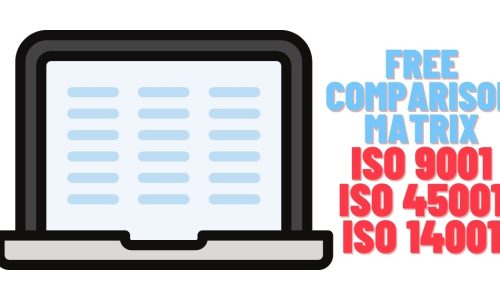What is ISO 45001?
ISO 45001:2018 is an international standard for occupational health and safety management systems. It is the first standard published by International Organization for Standardization on occupational health and safety management system. Prior to this publication of ISO 45001, OHSAS 18001:2007 which was a British standard was used as a system for managing occupational health and safety at the workplace.
However, the standard ISO 45001:2018 provides requirements for an organization to maintain health and safety management systems. But an organization has to assess its specific requirements and accordingly take measures to maintain the system effectively.
ISO 45001:2018 offers the guidelines and mechanism to develop and maintain occupational health and safety management system. The occupational health and safety management system is composed of policies, processes, procedures, objectives, action plans, and records to govern the organizational system and maintain a good level of health and safety performance.
Why is there a need for ISO 45001:2018? Businesses are facing challenges to prevent injuries and ensure safety at the workplace. With the implementation of ISO 45001, businesses show their commitment to the care of the employees doing work at the workplace and to earn recognition as responsible employers. The implementation of this standard is mainly due to three major reasons i.e. moral, financial, and legal.
- Financial – Businesses has to compensate their employees for the injuries and damages they receive during the work. So it is important to have a system in place in order to prevent damages in the first place.
- Moral – A person coming to the work place in an organization has a moral right on the organization that he/she goes safe and healthy to his/her home after work. It is a moral binding on organizations to maintain such system that can ensure worker’s health and safety.
- Legal – Legally employers are responsible for work place safety as per the laws of the land. If legal requirements on health and safety is compromised by the business, legal authorities can cancel the organization’s right to work on the ground of legal violation.
ISO 45001:2018 is thus essential for organizations to help them effectively maintain their systems in order to manage their finances well, ensure morality as employers, and remain legally compliant. The standard focuses on legal requirements to be ensured but does not provide detailed guidance, an organization has to refer to the applicable laws and regulations for compliance.
ISO 45001:2018 is made on HLS structure i.e. high level structure which means that it follows the same structure as other standards of ISO like ISO 14001:2015 and ISO 9001:2015. Therefore it will be easier for implementers to integrate it with other standards if they are working on multiple standards.
ISO is helping organizations to develop and maintain occupational health and safety management system by the publication of this standard. It will help an organization to build repute for all interested parties if they show empathy for health and safety for employees as well as they can reduce their financial damages against injuries and legal violations. Organizations that are looking to implement ISO 45001:2018 should go through the list of mandatory documents required by the standard.
What is ISO/PC 283?
ISO/PC 283 is a project committee of ISO (International Organization for Standardization) which is an international federation of national bodies for standardization. The committee ISO/PC 283 was assigned a work to develop an international standard for occupational health and safety management system i.e. ISO 45001.
ISO/PC 283 is the ISO Project Committee (PC) who is responsible for the development of the new ISO standard ISO 45001 Occupational health and safety management systems. This standard provides a framework for good practices in OH&S management and identifies requirements for a management system. The standard is useful for any type and size of the organization, doing any kind of activity.
A new work item proposal on the Occupational health and safety management systems was first presented in June 2013, ISO/PC 283 prepared a working draft in January 2014 following the proposal. 1st committee draft was prepared in July 2014. 2nd committee draft was issued in March 2015, then the draft international standard was prepared in January 2016. The second draft international standard was prepared in April 2017.

Finally, FDIS which is the final draft international standard was published in November 2017. Then it was voted by member parties and the ballot closes on 25th January 2018. Finally, after voting by a majority of member parties’ endorsement on the FDIS version of ISO 45001:2018, standard ISO 45001:2018 is published on March 12, 2018.
ISO/PC 283 prepared the standard on a high-level structure which is well compliant with the structure of other latest standards on management systems for example ISO 9001:2015 and ISO 14001:2015.
PDCA – Plan do check act cycle on ISO 45001:2018
Most of the management systems published by ISO (International Organization for Standardization) works on the principle of the plan, doing, checking, and acting, which is normally referred to as the PDCA cycle. This particular thinking has brought a revolution in the manufacturing and service sectors. The PDCA concept is an ongoing activity to continually improve the organization. ISO 45001 is also based on PDCA thinking.

The nucleus of all activities and phases in the occupational health and safety management system is the role and commitment of the top management i.e. the Leadership that is driven with worker participation and involvement in the occupational health and safety management system. The leadership is the clause 5 of the standard.
As clearly seen from the PDCA process flow in the above illustration, external and internal issues along with the needs and expectations of interested parties influence the planning phase of the occupational health and safety management system. The “Plan” phase in the OH&S management system is the 6 clause i.e. planning in the standard. In the planning of the OH&S management system, risks and opportunities are determined and assessed. Based on risks and opportunities, OH&S objectives are established. Moreover, organization develops processes necessary to deliver an intended result that is compliant with OH&S policy.
In the “Do” part of the OH&S management system, operational controls and processes identified in the planning phase are implemented. This “Do” part varies with the organizational size and processes. An organization has to identify support functions and operational controls for management systems based on the complexity of the processes and hazards involved within those processes.
It is essential to look for the mandatory documentation required by the ISO 45001:2018 standard.
In the “Check” part, activities, organization measures, and monitors processes and operational controls against the occupational health and safety management system’s policy and established objectives. Internal audits and management reviews are also part of the check phase of the management system.
Finally, the organization goes in the “Act” part where results and outputs of management reviews, corrective actions on nonconformity, and other measures are taken in order to continually improve the performance of occupational health and safety management systems.
The cycle is again repeated in terms of reassessment of risks and opportunities, and accordingly identification of new or modified processes for change in risks or opportunities. Then implementation of the defined modified or new processes. Overall modified processes and operational controls are then verified in monitoring and measurement i.e. check part of the PDCA cycle. Ultimately again actions are taken and the cycle is reiterated again and again for continual improvement.
What is the release date of ISO 45001?
ISO 45001 standard for occupational health and safety management system is released and published by ISO on March 12, 2018. This is the first international standard on occupational health and safety management system. This is the first edition of the ISO 45001.
Prior to the publication of ISO 45001, the FDIS version was released for balloting. Thus the official release date of ISO 45001 publication is March 12, 2018. ISO PC/283 worked on the standard and went through several phases before the publication.
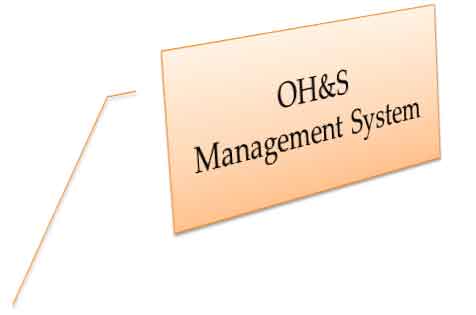
With the release of ISO 45001, many companies are gearing themselves up in order to gain a competitive advantage over their competitors, and make the way forward for the implementation and certification.
Check the List of important documents required by the published ISO 45001:2018 standard.
Surely those coming in the lines of successful certification and implementation can exhibit their commitment to occupational health and safety obligations and can be well compliant with legal requirements as well. After the release of ISO 45001, companies can migrate from OHSAS 18001:2007 to ISO 45001:2018 in the period of three years.
What is the benefit of ISO 45001 to any organization?
ISO 45001 benefits are countless, it is a management system standard that helps companies to improve their occupational health and safety performance through the fundamental concept of the PDCA cycle. The organizations make their workplaces safe and continually monitor their performance and make improvements accordingly.
The direct and indirect cost of an occupational accident is far more than the cost of implementing a management system that contributes to preventing such accidents in the first place or make organization extra cautious to respond to such situations in an emergency state.

By implementing ISO 45001, companies show a commitment that they really care about occupational health and safety. ISO 45001 encourages the participation of the workers in the management system. Therefore workers trust the management system and contribute towards the well being of the system.
By implementing ISO 45001, organizations gain the following benefits:
- Fulfill moral obligations systematically to provide a safe system of work through occupational health and safety management system
- Remain financially steady by reducing the number of incidents ultimately maintaining the premium for insurance policies at optimum level.
- Remain legally compliant by regular evaluation of compliance.
ISO 45001 Audit Checklist
Audit checklist is a helpful document for auditors to keep the audit on track and ensure that all important aspects of audit are well checked. Most of the auditors use an audit checklist, the ISO 45001 audit checklist is a guide for auditors to assess the organization on the basis of ISO 45001 and will ensure that no Clause is missed during audit.
There can be two types of audit checklists i.e. internal audit checklist and external audit checklist.
- Internal audit checklist is customized checklist for organizations’ occupational health and safety management system based on their organizational procedures, voluntary & compliance obligations.
- External audit check list is customized based on certification requirements given by the accreditation body. Usually external audit check list is drafted on the basis of type of audit scope such as certification audit, migration audit, surveillance audit.
- Certification audit is carried out in a way to verify all standard requirements. It means certification audit check list is based on questionnaire covering all requirements of the standard.
- Migration audit checklist is based on questionnaire covering the migration requirements only. It means all the new or changed standard requirements from OHSAS 18001 to ISO 45001 will be verified.
- Surveillance audit is usually a follow-up audit of the certification audit. Therefore auditor observations such as potential non-conformity on the certification audit will be primarily re-verified in surveillance audit. Or effectiveness on actions on previous non-conformity will be checked. Therefore this needs to be a customized checklist on the basis of organizations’ performance on it’s health and safety management system.
Learn about the list of mandatory documents required by ISO 45001.
In short the audit checklist is a document that ensures that the scope of the audit is met and all requirements are assessed. It helps the auditor to manage time and coordination to cover various aspects of the audit. Therefore auditor should take help from a checklist.
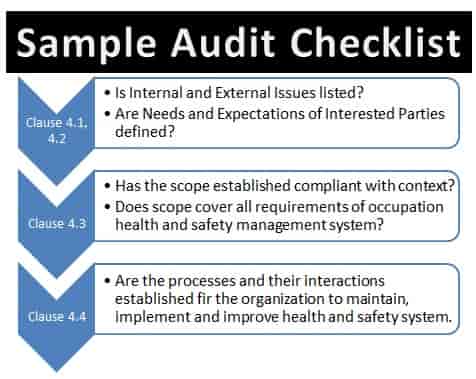
Are you interested to learn about ISO 45001 awareness and lead auditor training courses?
Likewise, it is said that experienced auditors do not necessarily require a checklist instead they cover all the requirements by verifying the trail of some audit samples in different requirements of the audit.
What is the FDIS version of ISO 45001?
The term FDIS stands for “final draft international standard”. Therefore FDIS version is the final draft of the ISO 45001 standard i.e. occupational health and safety management system.
It was issued for voting on 11th November 2017 and the voting continues till 25th January 2018. After the agreement on the FDIS version, ISO finally publishes the standard in March 2018.
See the list of mandatory documents to be maintained by ISO 45001:2018 compliant organization.
It is said that the FDIS version contains almost the same content as in the published version of ISO 45001:2018. Therefore some people find an easy way by getting a free copy of FDIS ISO 45001:2017 online and use it in place of the standard. However, in law-abiding organizations this practice is not recommended.
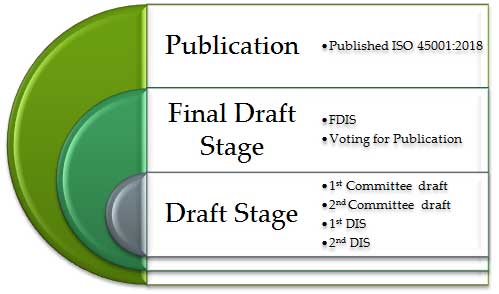
Note: People search for the free copy of FDIS, but it should be noted that the copies of FDIS circulated on different websites violate the copyrights of ISO and the member bodies who own the standard. One can now purchase a published version of the standard ISO 45001 from the ISO store or any other store of ISO national member organization.
ISO 45001 Standard Free Download
ISO 45001 is an occupational health and safety management system. As the standard is now published, many professionals and learners will yearn to download a free copy of the ISO 45001:2018 standard. As you search for ISO 45001 standard free e copy, you will find results published by various certification bodies and consultants. When you go on downloading these links provided by these websites you will see that these online material posing as the free standard provider will be giving their own promotional material.
Some of the online materials might be helpful in getting an understanding of the standard, but in fact, these aren’t standard themselves. It can be termed as helpful material, promotional stuff, ISO 45001 guide but is not the original standard published by ISO. ISO 45001:2018 standard is a document that is available from an ISO store or member body store at a cost. It is copyright documented which means it is illegal to circulate it once you purchase it.
Publishers, who are sharing the draft version of ISO 45001 or the published version, may face legal action lead by ISO or any other member state. Therefore using the unauthorized copy is unlawful and therefore one must purchase the standard or push the employer to purchase it.
The standard is available on ISO store at a cost of around 165 US dollars. Members of ISO will be selling the standard in their own national currency. Once a standard is purchased it will have a water mark on every page bearing the name of organization or personal who purchased it and thus the copy will be valid for use for that personal or organization only. Thus unauthorized copy usage will be illegal.
Access the List of mandatory documents required by ISO 45001:2018.
A free guide is here for the comparison of ISO 45001:2018 to OHSAS 18001:2007. In order to download in order to make you understand what is the standard all about. Claim and download your free PDF E-copy now.
ISO 45001 Lead Auditor Training Course
ISO 45001 is an auditable standard for occupational health and safety management systems. The standard provides requirements for a management system that can handle occupational health and safety related issues effectively.
Since the standard is an audit able standard therefore it requires professionals having the competence to audit. ISO 45001 Lead Auditor Course provides the basic competence needed for a professional to join the field of auditing for this standard.
The lead auditor course on ISO 45001 is accredited by international bodies like Exemplar global which was RABQSA formerly, and IRCA. The training bodies provide these courses in accreditation with these accreditation bodies.
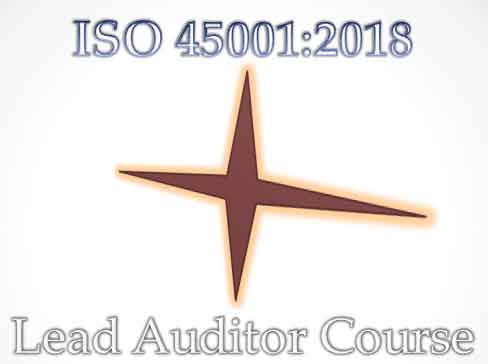
After successful completion of the lead auditor course, a professional can perform an external audit of ISO 45001. The role of auditing will be based on prior experience. Moreover, the lead auditor course will also be helpful in the implementation of ISO 45001 and to lead internal audit functions within an organization. Consultants also do this course to provide implementation consultancy to organizations as clients.
This course is usually a full 5 days course which is 40 hours. The course content includes principles of auditing and the content and requirements of the standard. The course is usually an interactive session with includes group exercises, discussions, lectures, individual assignments followed by an examination.
Only the learners who qualify for class participation, as well as the exam, receive the lead auditor certificate traceable to the accreditation body. The certificate is valid for 3 years to register with the accreditation body as a registered auditor. After 3 years, an individual has to retake the course to continue the status of a registered auditor with the accreditation body.
ISO 45001 Internal Auditor Course
Internal auditing is an important requirement of ISO 45001:2018 stated in clause 9.2. It is a mandatory requirement of ISO 45001 under the main clause 9 i.e. Monitoring, measurement, analysis, and performance evaluation. Normally in companies, internal auditing is a function performed by trained internal auditors from the audit departments or cross-functional internal audit teams. The basic requirement for these auditors is competence.
In ISO 45001 which is occupational health and safety management system, clause 9.2.2 c. Requires an organization to “select auditors and conduct audits to ensure objectivity and the impartiality of the audit process.” The objectivity of the internal audit function cannot be maintained unless the auditors know about the process of auditing and the standard which is the audit criteria i.e. ISO 45001 or the organization’s internal audit criteria based on ISO 45001.
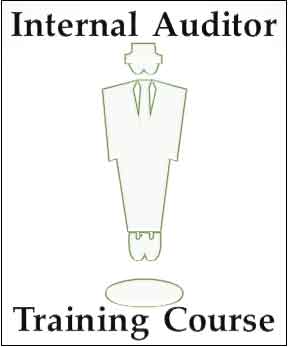
Therefore it is the necessary requirement of the standard to establish competence for internal auditors in order to perform the internal audit function objectively. ISO 45001:2018 internal audit training is focused on developing competence among professionals to audit occupational health and safety management as the requirements of ISO 45001.
Check the documented information requirement of internal auditing by ISO 45001 in list of mandatory documents.
The course is meant to train professionals for internal auditing of ISO 45001 as audit criteria and is usually 16-24 hours course offered by different training bodies. The course fee varies from country to country and from training body to training body. It usually ranges from 250 USD to 450 USD.
Some of the internal audit training providers are SGS, Bureau Veritas, BSI Group, TÜV SÜD, etc. Selection of these training providers should not be limited to the training cost but it should consider factors like trainer’s profile, trainer experience in the relevant sector, reviews about the trainer, and facility outsourcing organization uses to deliver this training.
ISO 45001 Awareness Course
With the release of the ISO 45001 standard, many safety and industrial professionals want to learn the standard requirements. The awareness course on ISO 45001 is meant to provide professionals with the necessary understanding to support an occupational health and safety management system.
By doing the ISO 45001 awareness course, professionals can play a significant supporting role in the implementation of the standard. However, they cannot lead the implementation themselves neither they can perform internal or external audits by awareness courses on ISO 45001.
ISO 45001 awareness course is launched by Exoexcellence and Alison.com and it is supposedly free. Learners can avail themselves of awareness courses for free online.
There are paid awareness sessions on ISO 45001 that vary from the training providers. These paid programs vary from 8 hours to 16 hours of study depending upon the course content. The cost of these paid awareness courses also varies from 150 USD to 400 USD.

Managers, officers, and executives in an organization require a fundamental understanding of the standard that is where the ISO 45001 awareness course is helpful.
Check the list of documents required by ISO 45001.
Awareness is an important element of the ISO 45001:2018 occupational health and safety management system because it is also the requirement of clause 7.3, awareness is the necessary element of the occupational health and safety management system and so is the awareness of the management system itself for the organization’s middle management. The better the awareness of the workforce on ISO 45001, the better is the implementation of the standard and the better the performance of the overall occupational health and safety management system.



